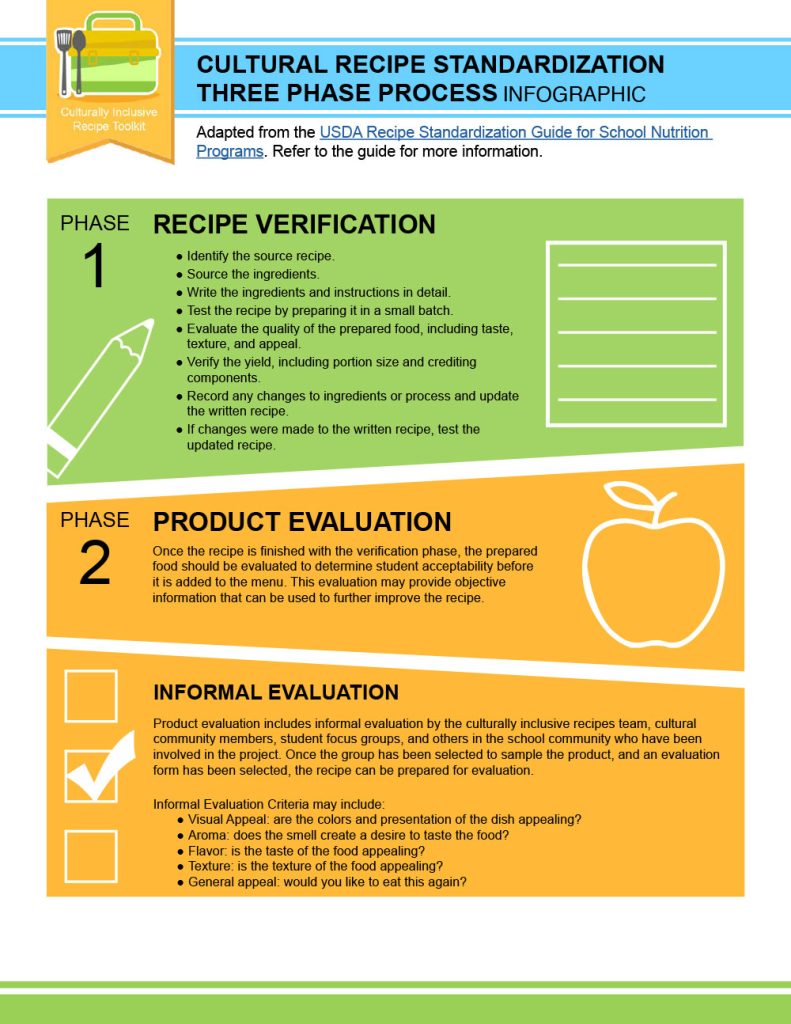The recipe standardization process has three phases.
Phase 1- Recipe verification consists of identifying the recipe, sourcing ingredients, writing and reviewing the recipe in detail, preparing it in a small-batch quantity, verifying its yield, and recording changes.
Phase 2- Product evaluation focuses on determining the acceptability of the product produced from the recipe. The product evaluation phase is conducted in two parts, first the informal evaluation followed by the formal evaluation.
Phase 3- Quantity adjustment phase is used to change the recipe yield, and ingredient amounts to the desired number of servings for use in the program.
A recipe may go through these phases several times before becoming standardized at the necessary quantity for an operation. School food service production teams should work together on the recipe standardization process. Input from students and other customers is critical during the evaluation phase. Decisions made during each phase determine the flow of a recipe through this recipe standardization process.
Once a recipe has been standardized for an operation, the standardization process should not have to be repeated unless changes occur in the availability of ingredients or equipment.
Learn about more about the phases of recipe standardization in this resource and apply them when you are standardizing cultural recipes to serve in your school meal programs.

